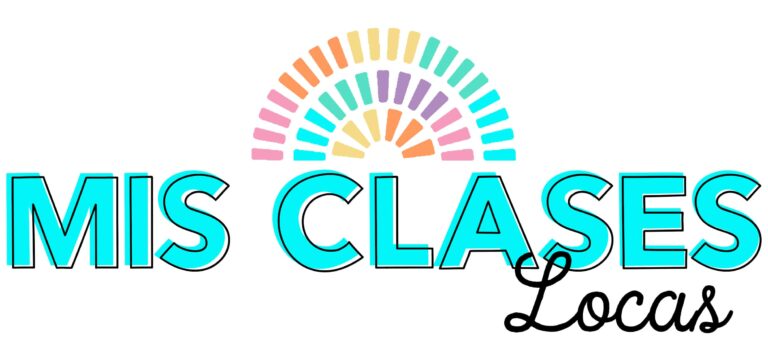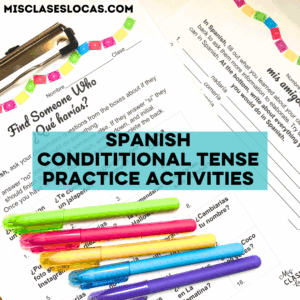
My Spanish 2 class is getting ready to read their first novel in the past tense, Fiesta Fatal. (You can see our tentative year curriculum here). Even though I try to casually use some past talking about our summer, our weekend, and talking about novels, we have not really dived into the past too much yet. I think that comes with the mentality that has always been ingrained, stemming from textbooks that Spanish 1 uses present, Spanish 2 uses past and other tenses are reserved for upper levels. Even though I am trying to move away from this, even the most comprehensible input resources tend to follow that pattern.
Before starting the novel I want to make sure that the key past tense vocabulary is introduced. I have learned from experience that front-loading the vocabulary before starting the novel makes reading a much more positive experience. Then we can move quickly through the book without it becoming a drag. There is quite a bit of el imperfecto in particular in the first chapter, including four of the “Super 7” (era, tenía, estaba & quería) that are used a lot. Since I have never formally done special person interviews with this group, I decided to do a twist on my Super 7 Unit, to make it past tense.
Learn how to use High Frequency Verb units in this blog post.
To get in more repetitions of our “descriptive past” that is continuing or repeating, I put together a past tense slide show focusing on interviews about students when they were kids. Since the brain break songs were so popular the first time around in the other classes, I included them as well (but it was much harder to find songs with repetitions of these words!)
My plan is to spend a couple of weeks doing interviews, as well as take a break and do a story asking with the words as well. My plan for assessment is a free write, where they write about their childhood, as well as what they learned about their classmates. You can get a better idea of how I structured the unit the first time in this post & this reflection. I think that next year I may start with this special person unit in Spanish 2, and sprinkle the interviews through the start of the year. This way by the time we start reading a book in the past, these common descriptive past structures are just a normal part of our conversations.
**Update – now I will also use this Find Someone Who in the imperfect to review these common phrases asking about childhood as well. Learn how to use Find Someone Whos in this blog post.
Get all of my El Imperfecto Resources together in this Bundle
But what about the preterite tense in Spanish?
As I mentioned before we have used the preterite or sudden/completed past talking about our summer, our weekend and events in novels. To better focus on it, I also plan to do Martina Bex’s Somos 2 – foundations Unit 1 to help solidify some key preterit as well before starting the novel. For the rest, I just plan to point out endings as they show up. This is what I did last year, and the new endings were no big deal to the students. The pop of grammar of regular endings worked great. I have learned that the past tense output will take a while. I also know (now) that is will take a LONG time before students will be able to accurately narrate using both past tenses. This means I will just keep providing input with the rest of our novels this year (Fiesta Fatal, Felipe Alou & Bianca Nieves) and hope that eventually it is acquired.






